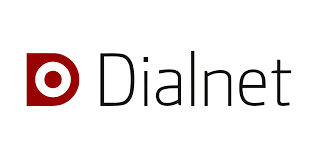Didactic Model in the Teaching-Learning Process at the Higher Education Level
DOI:
https://doi.org/10.18050/eduser.v10n2a5Keywords:
teaching, learning, educational model, technologyAbstract
The main purpose of the research was to create an educational approach to facilitate the learning of physics in a mechanics course at the university level, supported by the use of technological resources and active and participatory didactic approaches appropriate to meet the needs and requirements of the era. current. The study was carried out at the National University of Engineering, specifically at the UNI - North headquarters, located in Estelí, using a mixed approach with a qualitative predominance within the socio-critical paradigm. The sample included a total of 90 students, 5 professors, a coordinator and a director, who were selected using a non-probabilistic and convenience sampling method. To collect data, various techniques were used, such as document analysis, literature review, observation, interviews, matrix analysis, discussion groups and surveys. Based on the findings obtained, a heuristic didactic model was developed with the objective of improving the teaching-learning process of Physics in higher education. This model stands out for its applicability in other disciplines, such as Mathematics. The research concludes that the application of this model can have a significant impact on the promotion of new scientific research in the field of Physics and Mathematics teaching. In summary, this article offers a significant contribution to improving the teaching-learning process in higher education through the introduction of an innovative and flexible heuristic model.
References
Hernández, D. A., y Hernández, F. J. (2023). Diseño De Modelo Heurístico (DONALD) Para La Enseñanza – Aprendizaje De La Física A Nivel Universitario. Revista Ciencia y Tecnología El Higo, 13(1), 46–59. https://doi.org/10.5377/elhigo.v13i1.16370
Hernández, R., Fernández, C., & Baptista, M. D. (2014). Metodología de la investigación. McGraw-Hill Interamericana.
Herrera, C. J. (2023a). Interdisciplinariedad a través de la Investigación en Matemática y Física. Revista Chilena de Educación Matemática, 15(1), 31–45. https://doi.org/10.46219/rechiem.v15i1.126
Herrera, C. J. (2023b). Metodología basada en competencias para el aprendizaje de las matemáticas. Revista Varela, 23(65), 165-176. https://doi.org/10.5281/ZENODO.7873784
Martínez, M. (2006). Ciencia y Arte en la metodología Cualitativa. (2 ed.). TRILLAS.
Muñoz, C. (2011). Cómo elaborar y asesorar una investigación de tesis. (2 ed.). Pearson Educación.
Pineda, E. B., Alvarado, E. L., & Canales, F. H. (1994). Metodología de la Investigación. Manual para el desarrollo de personal de la Salud. (2 ed.). Organización Panamericana de la Salud.
Schuster, A., Puente, M., Andrada, O., y Maiza, M. (2013). La Metodología Cualitativa, Herramienta para Investigar los Fenómenos que Ocurren en el Aula. La Investigación Educativa. Revista Electrónica Iberoamericana de Educación en Ciencias y Tecnología, 4(2), 109 - 124. https://exactas.unca.edu.ar/riecyt/VOL%204%20NUM%202/TEXTO%207.pdf
Serna, H., y Díaz, A. (2013). Metodologías Activas del Aprendizaje. Fundación Universitaria María Cano. https://1library.co/document/ky6mr17q-libro-metodologias-humberto-serna-gomez.html
Taylor, S. J., y Bogdan, R. (2001). Introducción a los métodos cualitativos de investigación. (3 ed.). Paidós Ibérica, S.A.
Universidad Nacional de Ingeniería. (2008). Modelo Educativo Institucional, un compromiso de todos para construir hoy la UNI del futuro. Managua, Nicaragua. https://ingenieriaciviluninorte.files.wordpress.com/2010/06/mei-final.pdf
Additional Files
Published
How to Cite
Issue
Section
License
Copyright (c) 2024 Donald Ariel Hernández Muñoz, Cliffor Jerry Herrera Castrillo

This work is licensed under a Creative Commons Attribution 4.0 International License.













